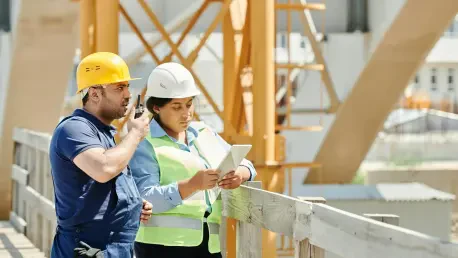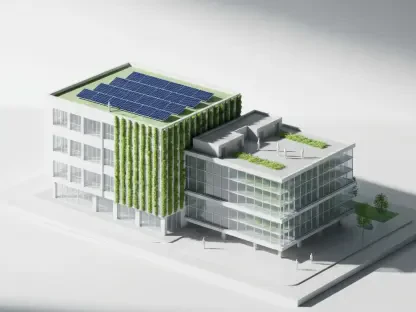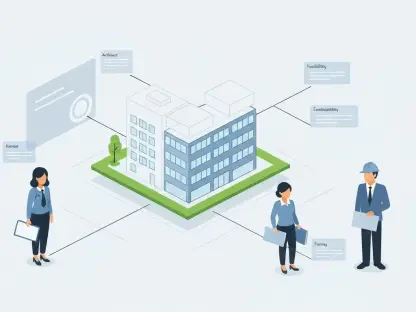In the ever-evolving field of construction, Luca Calarailli stands out as a distinguished expert deeply versed in design, architecture, and the transformative potential of technology. His insights into infrastructure resilience are particularly valuable as we face increasing challenges from climate change and aging systems. Today, Luca sheds light on the intricacies of building and sustaining infrastructure that can withstand the tests of modern demands and future uncertainties.
How do lifeline infrastructure systems impact daily life, and why are they often overlooked until they fail?
Lifeline infrastructure systems are the backbone of our daily lives, delivering essential services like water, electricity, and transportation. They’re so integral that they often fade into the background until something goes wrong. People typically realize their importance only when there’s an outage or disruption, which highlights how dependent we are on these unseen systems. Their invisibility in routine operations is precisely why they’re often neglected in terms of maintenance and upgrades until it’s too late.
What factors are currently placing stress on U.S. infrastructure, and how do these affect disaster recovery planning?
Aging infrastructure, deferred maintenance, and increasingly severe weather events are key stressors on U.S. infrastructure. Many systems were built decades ago and weren’t designed to handle the environmental conditions we face today. This creates significant challenges for disaster recovery planning, as outdated systems are more vulnerable to collapse or failure during extreme events. Planning must now account for these deficiencies and find ways to rebuild stronger and more resilient structures.
Can you explain how infrastructure built several decades ago is incompatible with today’s needs in terms of redundancy and resiliency?
Infrastructure from past decades was constructed under different assumptions of climate, technology, and transportation. For instance, highway designs from the 1960s, with short ramps and narrow lanes, don’t align with today’s larger, faster vehicles and increased traffic volumes. These old systems lack the redundancy and resiliency needed to weather modern challenges, meaning they are more prone to failure and less able to bounce back quickly after a disaster.
Why do current U.S. funding programs for disaster recovery fall short in addressing the root causes of infrastructure vulnerabilities?
Current funding programs often focus on restoring infrastructure to its pre-disaster state rather than addressing the underlying vulnerabilities. This approach is more about replacing what’s been damaged instead of upgrading to withstand future threats. It’s a shortsighted strategy that perpetuates the cycle of damage and repair without fostering long-term resilience.
What concerns exist about the coordination among various entities that own or operate individual infrastructure components?
There’s a significant challenge in the fragmented ownership and operation of infrastructure systems. Different entities, whether federal, state, or private, own various components, complicating efforts for unified disaster response and mitigation planning. This lack of coordination can lead to inefficiencies and gaps in service that worsen during disasters when seamless operation is most crucial.
What is “functional recovery,” and why is it important for planning resilient communities?
Functional recovery refers to infrastructure’s ability to maintain or quickly restore critical functions after a disaster. It’s a more forward-thinking approach than simply aiming for basic functionality. Prioritizing functional recovery helps build community resilience by ensuring that essential services remain operational or can come back online swiftly after an adverse event, reducing downtime and societal impacts.
How does the Lifeline Infrastructure Hub contribute to better management of extreme weather impacts?
The Lifeline Infrastructure Hub acts as a convergence point for partnerships among government entities, nonprofits, and industry groups. By collaborating, these stakeholders can identify critical infrastructure vulnerabilities and develop cost-effective solutions to strengthen them. This collective effort helps communities better withstand and recover from extreme weather events by ensuring that different layers of infrastructure work together seamlessly.
Given the current financial climate, why is rebuilding U.S. infrastructure networks both costly and necessary?
Rebuilding U.S. infrastructure is an expensive endeavor due to the sheer scale and complexity of modern systems. Nonetheless, it’s essential because many existing structures are not equipped to meet current and future demands. Investing now to upgrade these systems not only prevents costlier repairs in the future but also enhances safety, efficiency, and resilience against climate threats.
How has the Infrastructure Investment and Jobs Act impacted funding for lifeline systems, and why is there still a funding gap?
The Infrastructure Investment and Jobs Act has injected valuable funding into lifeline systems, helping counteract some effects of inflation and funding shortages. However, the overall needs far surpass this injection. Many systems remain underfunded due to declining revenue sources like the gas tax, creating a persistent gap between available funds and what’s necessary for comprehensive improvements.
What role do public-private partnerships play in addressing the funding gap for infrastructure projects in North Carolina?
Public-private partnerships in North Carolina help bridge the funding gap by bringing in private sector resources and expertise. These collaborations enable the state to undertake projects that might otherwise be stalled due to insufficient public resources alone. They also provide innovative solutions and share financial risks, making ambitious infrastructure projects more feasible.
How has New Orleans learned from past disasters to guide its investment in infrastructure upgrades?
New Orleans has learned to strategically focus its infrastructure investments based not only on age but on performance and failure patterns noted during past disasters. This targeted investment approach helps ensure resources are directed toward systems most in need of upgrading, thereby enhancing resilience to future events and minimizing the risk of repeating past failures.
What is the significance of targeted investment in infrastructure, and how does this apply to New Orleans?
Targeted investment allows cities like New Orleans to concentrate their efforts on the most vulnerable and critical infrastructure aspects. By investing where it counts, New Orleans can fortify areas prone to failure, improving overall resilience and reliability, and making the city better equipped to handle future challenges.
How can artificial intelligence and machine learning enhance the allocation of limited resources for infrastructure improvements?
Artificial intelligence and machine learning can optimize resource allocation by analyzing data to predict where failures are most likely to occur. This capability allows for the development of a capital improvement strategy grounded in real-world conditions and anticipated risks, ensuring that investments address the most urgent needs and achieve the greatest impact.
What role do technologies like digital twins play in planning for more resilient infrastructure?
Digital twins create virtual models of physical assets that provide detailed insights into infrastructure performance under varying conditions. By simulating scenarios, they allow planners to foresee potential failures and understand operational impacts, thus aiding in the design of systems that are more robust and adaptable to environmental stresses.
Are there any specific examples of how AI and digital twin technologies have been applied successfully in infrastructure management?
There have been successful applications, such as using AI algorithms to prioritize repairs on aging water systems based on failure forecasts, or employing digital twins in managing urban transit systems to improve efficiency and reduce disruptions. These technologies offer a data-driven approach to making informed decisions that enhance infrastructure resilience.
Do you have any advice for our readers?
Stay informed and proactive about the infrastructure in your community. Whether through advocating for smart policies or supporting local initiatives, your involvement can drive the change necessary to build resilient systems prepared for future challenges. Investing in understanding and improving infrastructure today will pay dividends in safety and quality of life tomorrow.









